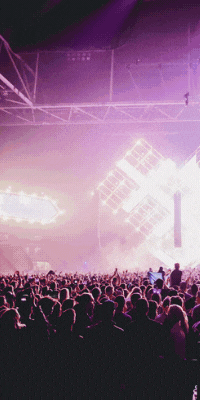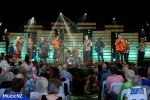Claire Cowan - Composition Review: Hansel and Gretel
 The Brothers Grimm fairy tale Hansel and Gretel is, ah, rather 'grim' to say the least. It’s the story of a brother and sister who get lost in the woods and are befriended by a cannibalistic witch who lives in a house made out of sweet things, most notably gingerbread. She entices them to eat these sweet treats in order to fatten them up so she can, in turn, eat them. The witch is ultimately outwitted by Gretel.
The Brothers Grimm fairy tale Hansel and Gretel is, ah, rather 'grim' to say the least. It’s the story of a brother and sister who get lost in the woods and are befriended by a cannibalistic witch who lives in a house made out of sweet things, most notably gingerbread. She entices them to eat these sweet treats in order to fatten them up so she can, in turn, eat them. The witch is ultimately outwitted by Gretel.
As a rite-of-passage cautionary tale, it has multi-layered themes but, at its essence, it’s one of the scariest fairy tales you can imagine reading to a five or six year old and yet it has endured in popularity for more than two centuries.
The best known rendition of Hansel and Gretel is probably Engelbert Humperdinck’s opera of the same name, while this year it was adapted as a horror movie by director Oz Perkins.
New Zealand composer Claire Cowan’s reworking of Hansel and Gretel as a score for a full-length ballet, is a stunning and quite remarkable achievement. She’s the first woman in New Zealand to compose a ballet. The success of the original production and performance by the Royal New Zealand Ballet, led to a sponsorship offer by the New Zealand Symphony Orchestra, with extra funding crowd-sourced through a Boosted campaign during the Covid-19 lockdowns. The recording process was, naturally, hugely impacted.
At nearly two hours in length, Hansel and Gretel is bold and ambitious (it was written for an orchestra of 50) but never falters in timing or delivery. It unfolds in two acts – the first with 17 scenes or episodes including an overture, the Mother and Father Pas de Deux and King and Queen Tango; the second with 12 movements including Curtain Call and the Mother and Father Pas de Deux 2.
The story line easy to navigate with 'breadcrumb' titles such as Dust Is Falling, Entering The Forest, Entering The Gingerbread House and Hansel And Gretel Are Trapped. And, as some of the other titles suggest – The Witch’s Baking Charleston and Gingerbread Boogie Men - Cowan has added a novel twist by infusing the music with a touch of Broadway and jazz from the 1920's.
The music is allowed to breathe between sections that convey movement with daring and often quirky percussion sounds and brass and woodwinds and texture, where the orchestrations are a lot fuller and richly colourful.
One particularly striking element is the scoring for violin, which could have been written specifically for the great French-Italian violinist Stephane Grappelli who showed the world how the instrument could 'swing'.
As a delightful addendum to the score, Cowan commissioned writer Amy Mansfield to write a version of the story, narrated by Johnny Brugh, and featuring music from the ballet.
Time will tell, but this could so easily pan out to have the same kind of 'educational' influence as Prokofiev’s Peter and the Wolf has had on introducing young people to the world of classical music.
It’s historic significance aside, Hansel and Gretel reinforces Cowan’s reputation as one of New Zealand’s most exciting composers. This reviewer has little doubt orchestras and dance (not just ballet) company’s around the world will give her fairy tale adaption a global presence. It could well turn into a fairy tale moment in her career.
Other Reviews By malexa
 DateMonthYear - EP Review: The Exodus Suite
DateMonthYear - EP Review: The Exodus Suite
22 May 2021 // by malexa
The metamorphosis of the genesis of Exodus into The Exodus Suite while not quite of Biblical proportions is nevertheless on a grand scale. These five degrees of separation, with accompanying videos (the final installment – which is on its way) might share the same source material but, as always, DateMonthYear founder Trevor Faville twists and shape-shifts with an informed sense of musical invention.
Read More...
13 May 2021 // by malexa
It’s still very much a brave new world when it comes to releasing music with its ever diminishing returns for physical product and the pecuniary stranglehold the major streaming services have on the industry. That’s why Tauranga-based boutique label Blood & Wires deserves a huge thumbs-up for its innovative and down-to-earth but wildly musically ambitious launch.
Read More...
 Metanoia - Single Review: Sonder
Metanoia - Single Review: Sonder
13 May 2021 // by malexa
It’s always handy for a reviewer to have a bit of background information about an artist to get a creative context of where they have come from and where they might be heading. Metanoia is a bit of a mystery in this respect.
Read More...
 Mark de Clive-Lowe - EP Review: Midnight Snacks Vol.1
Mark de Clive-Lowe - EP Review: Midnight Snacks Vol.1
16 Apr 2021 // by malexa
Mark de Clive-Lowe’s musical palette has always been so refreshing engaging and diverse that each new release is like receiving a care package – you don’t know what’s inside but you know you’ll find comfort in it. The Los Angeles-based Kiwi musician, DJ and night club and record label owner has been particularly busy in the last few years with albums and EPs ranging from the chillingly melodious jazz quartet outing Live At The Blue Whale, the steamingly funky club party Church Sessions with various cohorts and the conceptual Heritage I and II, which celebrated his bi-cultural heritage (he is half-Japanese).
Read More...
 Serpent Dream - EP Review: Nova
Serpent Dream - EP Review: Nova
11 Apr 2021 // by malexa
Serpent Dream's Nova is the debut release on Blood & Wires. The Tauranga-based boutique label was founded by Scott Brown last year with the express aim of raising the “profile of New Zealand based electronic and experimental artists.
Read More...
 Mecuzine - Single Review: Blue Skies
Mecuzine - Single Review: Blue Skies
15 Mar 2021 // by malexa
The slim-line edition of Mecuzine - brothers Joseph and Tony Johns – seems to have gained more than it might have seemingly lost. Blues Skies is the second single released since five became two and it’s another brooding, sonic masterpiece with an but almost tragically self-effacing punch line: “She wanted him to stay/Instead she got me/What an unlucky break”.
Read More...
 Ant Tarrant - Single Review: Candle Lights
Ant Tarrant - Single Review: Candle Lights
09 Mar 2021 // by malexa
Ant Tarrant has served his apprenticeship and it shows. Now back in New Zealand after following his muse to Central America and the US, where he was mentored in the art of song-writing and production, he’s settled in Kare Kare and opened up a music studio.
Read More...
 Naircol - Single Review: Turbo Outrun
Naircol - Single Review: Turbo Outrun
04 Feb 2021 // by malexa
In an interview with Naircol, following the release of his debut album Isolate late last year, he put collaborative ventures at the top of his wish list. It seems Santa Claus came calling in the form of Canadian producer Tokyo Rat, the result of which is the dynamic driving anthem Turbo Outrun.
Read More...
Most Viewed Artists
Latest Galleries
NZ Top 10 Singles
- APT.
ROSÉ And Bruno Mars - DIE WITH A SMILE
Lady Gaga And Bruno Mars - BIRDS OF A FEATHER
Billie Eilish - TASTE
Sabrina Carpenter - I LOVE YOU, I'M SORRY
Gracie Abrams - ESPRESSO
Sabrina Carpenter - SAILOR SONG
Gigi Perez - LOSE CONTROL
Teddy Swims - A BAR SONG (TIPSY)
Shaboozey - GOOD LUCK, BABE!
Chappell Roan








 Report A Problem
Report A Problem

